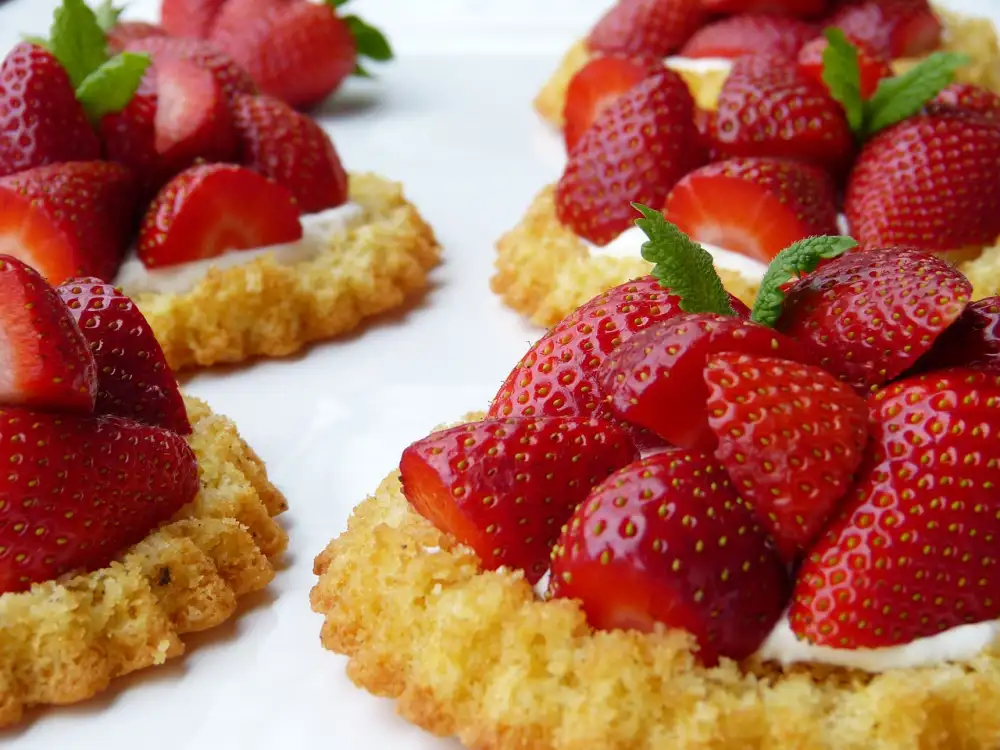Discover the Benefits of Gluten-Free Flour: A Healthier Alternative for Your Culinary Adventures

Gluten-free flour has gained popularity in recent years as a healthier alternative for those with gluten sensitivities or celiac disease. Gluten, a protein found in wheat, barley, and rye, can cause digestive issues and inflammation in some individuals. By eliminating gluten from our diets and using gluten-free flour, we can still enjoy our favorite culinary creations without compromising our health. In this article, we will explore the benefits of gluten-free flour and how it can be incorporated into a healthy lifestyle. So let's dive into the world of gluten-free baking and discover the endless possibilities it offers!
Understanding gluten and its effects on health
Understanding Gluten and Its Effects on Health
Gluten is a protein found in wheat, barley, and rye. For individuals with celiac disease or gluten sensitivity, consuming gluten can lead to various health issues. Celiac disease is an autoimmune disorder where the ingestion of gluten triggers an immune response that damages the small intestine. This can result in nutrient deficiencies, digestive problems, fatigue, and even long-term complications.
Even for those without celiac disease or gluten sensitivity, gluten can still cause inflammation in the gut and contribute to digestive discomfort. Research has also linked gluten consumption to conditions like irritable bowel syndrome (IBS) and non-celiac gluten sensitivity (NCGS). As a result, many people are opting for a gluten-free diet to improve their overall well-being.
By understanding the effects of gluten on health, individuals can make informed choices about their dietary preferences and explore alternatives like gluten-free flour for a healthier culinary experience.
Benefits of using gluten-free flour
Using gluten-free flour in your culinary adventures can bring a multitude of benefits to your health. Firstly, it is an excellent option for individuals with celiac disease or gluten sensitivity, as it allows them to enjoy baked goods without experiencing digestive discomfort. Additionally, gluten-free flour is often higher in nutrients such as fiber, vitamins, and minerals compared to traditional wheat flour. This can contribute to improved digestion, increased energy levels, and overall better well-being. Moreover, using gluten-free flour can help regulate blood sugar levels, making it a suitable choice for those with diabetes or those looking to maintain stable energy throughout the day. Lastly, incorporating gluten-free flour into your diet can promote weight management and support a healthy lifestyle by reducing inflammation and aiding in digestion.
Different types of gluten-free flours available
When it comes to gluten-free flour, there are several options available that can cater to different dietary needs and preferences. Some popular types of gluten-free flours include almond flour, coconut flour, rice flour, tapioca flour, and chickpea flour. Each of these flours has its own unique taste and texture, making them suitable for various recipes. Almond flour is nutty and adds moisture to baked goods, while coconut flour is light and absorbs liquid well. Rice flour is versatile and can be used in a variety of dishes, while tapioca flour adds a chewy texture. Chickpea flour is high in protein and works well in savory dishes like falafel or socca. Experimenting with these different types of gluten-free flours can open up a world of culinary possibilities for those following a gluten-free diet.
Tips for baking with gluten-free flour
When baking with gluten-free flour, it's important to keep a few tips in mind to achieve the best results. Firstly, it's crucial to measure the flour accurately as gluten-free flours can vary in density. Use a kitchen scale for precise measurements.
To improve the texture and structure of baked goods, consider adding binders such as xanthan gum or guar gum. These help mimic the elasticity that gluten provides. Start with small amounts and adjust according to your recipe.
Gluten-free flours tend to absorb more moisture than traditional wheat flour, so you may need to increase the liquid content in your recipes. Add extra liquid gradually until you reach the desired consistency.
To enhance flavor and add moisture, incorporate ingredients like applesauce, yogurt, or mashed bananas into your recipes. These can also help with binding.
Lastly, be mindful of baking times and temperatures. Gluten-free baked goods often require slightly lower temperatures and longer baking times to ensure they cook through without becoming dry or overly browned.
By following these tips, you can create delicious and successful baked goods using gluten-free flour while still enjoying all the benefits it offers for a healthier culinary adventure.
Incorporating gluten-free flour into a healthy diet
Incorporating gluten-free flour into a healthy diet is a great way to enjoy your favorite dishes while still maintaining a balanced lifestyle. By replacing traditional wheat flour with gluten-free alternatives, you can reduce the intake of gluten and potentially improve digestion. Gluten-free flours are rich in nutrients like fiber, vitamins, and minerals, making them a healthier choice for those with gluten sensitivities or celiac disease. Experiment with recipes that call for gluten-free flour and explore the wide range of options available. From pancakes to breads and pastries, there are endless possibilities to explore while nourishing your body with wholesome ingredients.
Potential drawbacks and considerations of gluten-free flour
While gluten-free flour offers numerous benefits, it is important to be aware of potential drawbacks and considerations. One major drawback is the cost. Gluten-free flours tend to be more expensive than traditional wheat flours, which can put a strain on your budget.
Another consideration is the taste and texture of baked goods made with gluten-free flour. Due to the absence of gluten, these products may have a different texture and taste compared to their wheat-based counterparts. It may take some experimentation and adjustments to achieve the desired results.
Additionally, gluten-free flours often lack the same nutritional value as whole wheat flour. They are typically lower in fiber and certain vitamins and minerals. To compensate for this, it's important to incorporate other nutrient-rich ingredients into your recipes.
Lastly, individuals who are not sensitive or allergic to gluten may not experience any significant health benefits from using gluten-free flour. It's essential to consult with a healthcare professional before making any drastic dietary changes.
Despite these considerations, many people find that the benefits of using gluten-free flour outweigh the drawbacks. With proper knowledge and experimentation, you can still enjoy delicious and nutritious baked goods while adhering to a gluten-free lifestyle.
In conclusion, embracing the versatility of gluten-free flour can be a game-changer for those seeking a healthier lifestyle. By eliminating gluten from our diets, we can reduce inflammation, improve digestion, and even experience weight loss. With a wide variety of gluten-free flours available, there are endless possibilities for creating delicious and nutritious meals. Although there may be some drawbacks and considerations to keep in mind, the benefits far outweigh any potential challenges. So why not embark on a culinary adventure with gluten-free flour and savor the flavors of a healthier life?
Published: 09. 12. 2023
Category: Health



